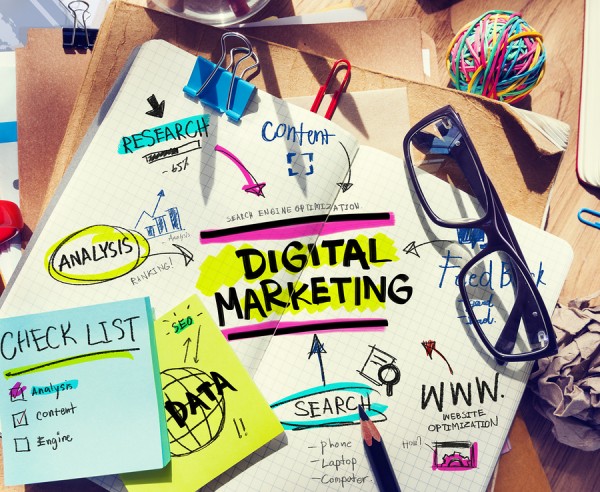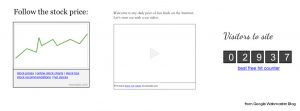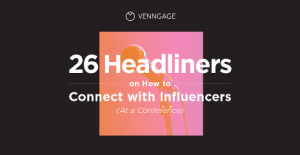![]() by Stephen Moyers November 26th, 2014
by Stephen Moyers November 26th, 2014
Is traditional advertising dead?
For media planners, the simple answer is No. But the better answer is to borrow a Facebook relationship status it’s complicated. Digital marketing is still in its early stages, so a robust set of long-term, hard data doesn’t exist yet. However, the short-term results suggest that advertising online can be really effective, and certainly competes with TV, print, outdoor, and other forms of mass media.
In a survey conducted by ThinkVine, CMOs polled said that digital marketing spend was expected to exceed traditional by 15% through 2014, and 16% in 2015 (you can see more stats from the survey here).
While media planners haven’t abandoned traditional marketing, there’s no question that digital plays an important role when planning a campaign. But because it’s still a relatively new and fertile landscape, professionals are experimenting with how to most effectively use it.
But before we get ahead of ourselves, let’s put everyone on the same page
In a nutshell, a media plan is a strategy employed by professionals to positively impact a brand through the use of advertising.
It involves consultation with the brand in question, research, creative or the generation of marketing collateral, and analysis.
For the purposes of this post, we’ll focus on how to use digital advertising when creating a media plan.
Things to keep in mind:
- Users control ads
- Data is granular
Users control ads
Print ads, commercials and other forms of traditional advertising rely on a mass model, meaning they direct a brand’s message to everyone all at once. Its target audience will most likely see them, but so too will everyone else. Anyone watching TV or flipping through a magazine is exposed, and can’t do much about it.
With digital marketing, however, the model tilts the other way. People have much greater control over what gets shown to them. Take video ads, for example. Many commercials that display at the start of a video can be skipped over, allowing users to decide if they want to watch an ad or not. Similarly, Facebook allows people to control if they want to keep particular sponsored posts in their newsfeed.
As a media planner, you have to think about the individual, rather than trying to hit as many people as possible. This might entail refined audience research, or a more dynamic approach to the creative stages of the process.
Data is granular
Under the traditional model, extracting specific data is difficult. While you may be able to correlate a surge in sales with recent commercial and billboard campaigns, you can’t measure exactly what drove people to buy, other than brand awareness.
Digital ads, on the other hand, are useful for their reportability. That is, in most cases you can measure down to the click how people interacted with your ad. Through analytics, you can track people’s online behavior and know on a much more granular level if your banner ad or video was a success or not. Online advertising also allows you to collect data on individuals, which can lead to more informed marketing when you optimize your campaign.
Best practices for a digital media plan:
- In depth consultation
- Set realistic goals
- Determine your metrics
- Identify your audience
- Choose the right media
- Analyze and optimize
- In house or outsource?
While some of these may look familiar to anyone who’s participated in traditional media planning, they can easily be adapted to generate a list of best practices for digital.
In depth consultation
The first stage of any plan is a consultation between client and planner. This process should be as open and honest as possible in order to make sure that the campaign aligns with the client’s goals. Again, because digital is still relatively new, the client may not be totally familiar with how display ads work, or know the pros and cons of video marketing. The planner or agency should view the creative assets from the past and learn why they did or didn’t work.
Set realistic goals
Perhaps most importantly, clients should clarify their goals. Do they want to increase sales? Ramp up traffic to their website? Create leads? Media planners, for their part, should be able to manage expectations based on a set of variables. Factors such as budget, resources, and brand equity will all play a part. If the client wants more than is realistic, this is the time to adjust and set specific goals, such as 5K unique website visitors within a month, resulting in 100 conversions.
Determine your metrics
Metrics are important and will vary depending on what you want to accomplish. For brand awareness campaigns, you may settle for CPM, or cost-per-thousand impressions. This refers to how many times an ad will display, and is actually similar to how traditional media planning models work. More targeted campaigns should consider cost-per-click (CPC). Using this metric, you can calculate specific ROI by measuring how many times people clicked your ad against the number of times it displayed.
Identify your audience
As with any ad campaign, you need to know who to show your marketing to. Planners should ask their clients for data, but do their own analysis as well. Are you targeting single men under 30? What are their lifestyle and spending habits? Have they already begun the buying journey or have they yet to start? Once you answer these kinds of questions, a brief is prepared for the creative team to work on.
Choose the right media
Data suggests that certain online users respond to certain types of media. Millennials may prefer to engage with and even share a brand’s video ads if they’re relevant to them. On the other hand, if a client sells a technical product or service, a blog might be a good option as text can sometimes convey details better than other media. Images, interactive banner ads and more should all be considered depending on the brand and product or service.
In the instance of, say, a banner ad, it’s important to customize it for the particular site it’s going to display on. Users have become used to ads and can easily tune them out unless they’re really creative. Generate a unique concept and tailor it to its specific location.
Analyze and optimize
Finally, after the campaign(s) has run for a predetermined amount of time, analyze the results. Figure out what’s working and what’s falling flat and adjust your media buys accordingly. Make sure to use A/B testing if you can, and dig deep in the reporting. Is an ad’s positive performance indicative of future conversions, or was it tied to a particular time and place? Likewise, don’t re-commit to a dud that shows no signs of improving.
In house or outsource?
When creating a media plan, a business needs to decide if it’s going to tackle the job itself, or outsource the work to experts. Both have their pros and cons. For small businesses or companies on a tight budget, generating the plan may be a good idea. You’ll certainly save a little money and can educate yourself on the process. However, with the DIY approach, you make a greater gamble with your money, and if you don’t have a dedicated creative team, you may fail to make persuasive marketing collateral.
Meanwhile, hiring experts can elevate your media plan to the next level. They’ll assist with valuable research, use their experience to advise you on goals and outcomes, and let their trained creatives come up with original, attention-grabbing materials. Additionally, you may get more enhanced data analysis on your campaign’s performance.
Post from: Search Engine People SEO Blog
How to Create an Effective Media Plan Using Digital Marketing
—
Written by Stephen Moyers, SPINX Digital Blog
The post How to Create an Effective Media Plan Using Digital Marketing appeared first on Search Engine People Blog.
(430)








